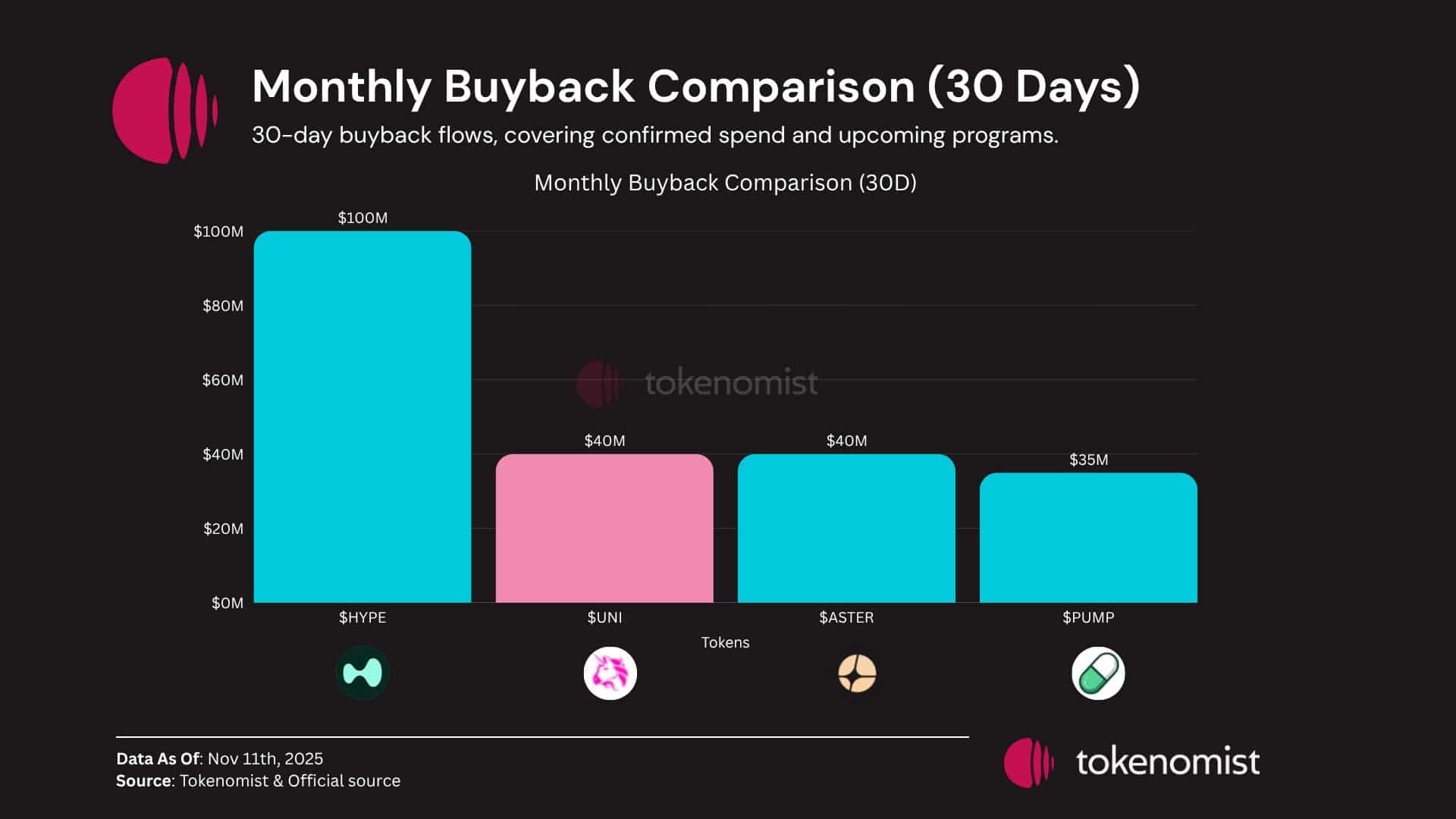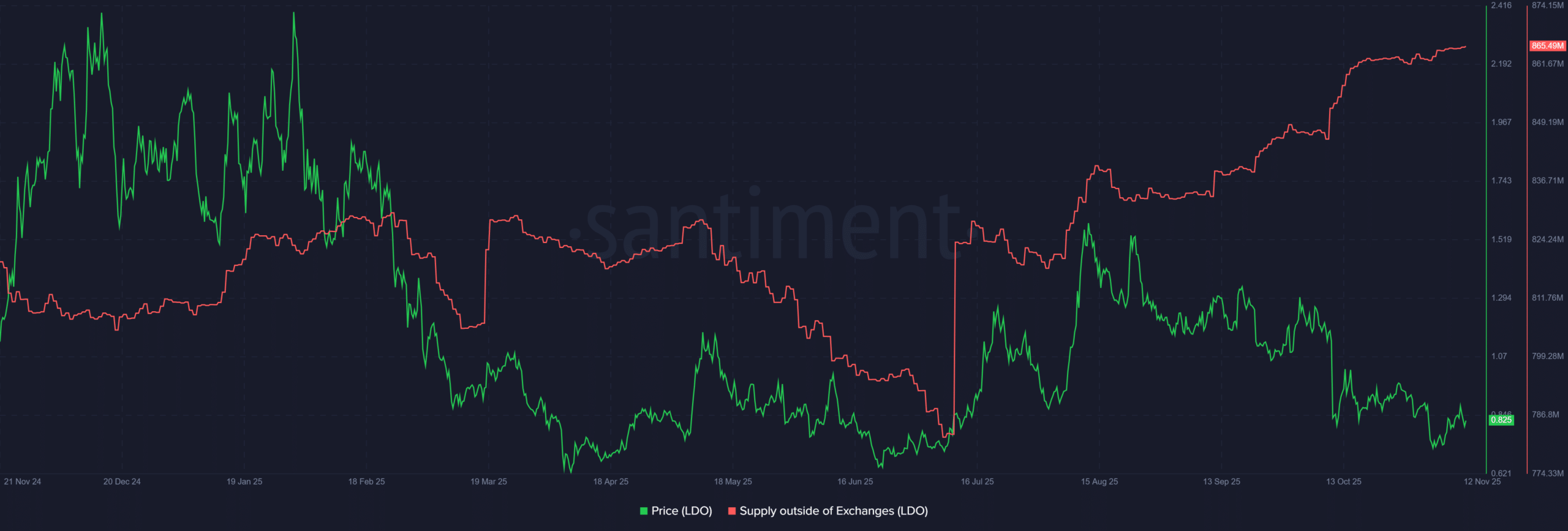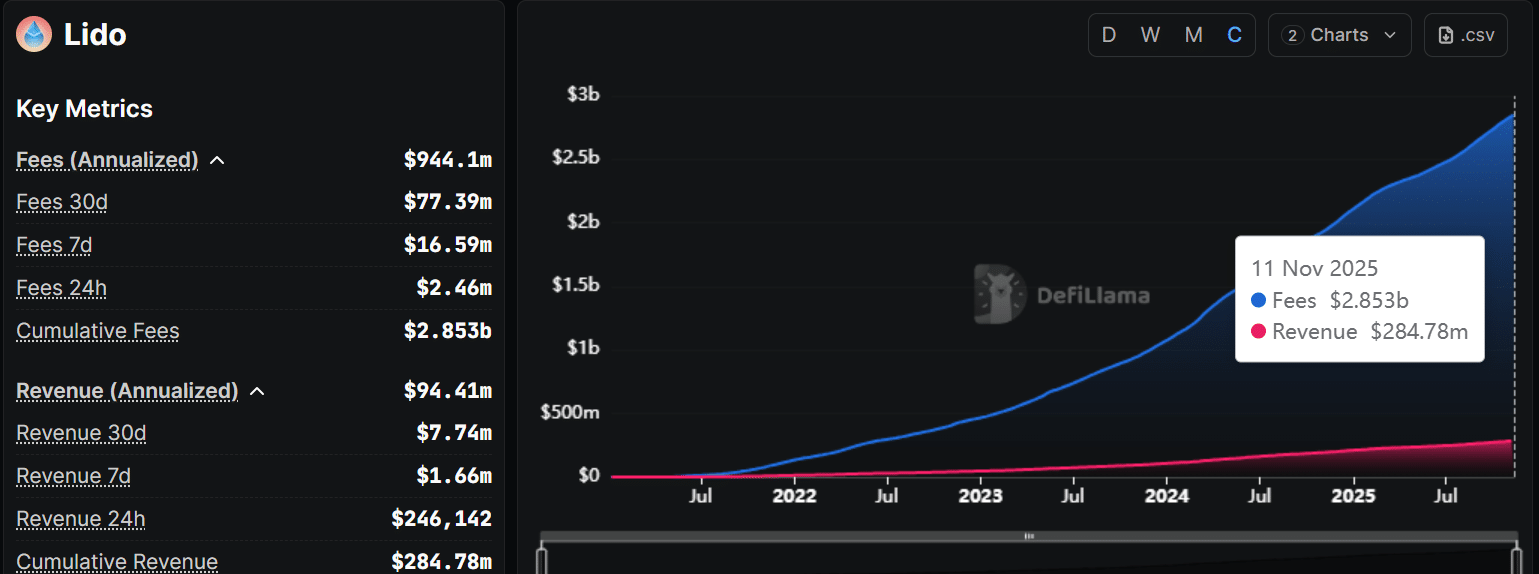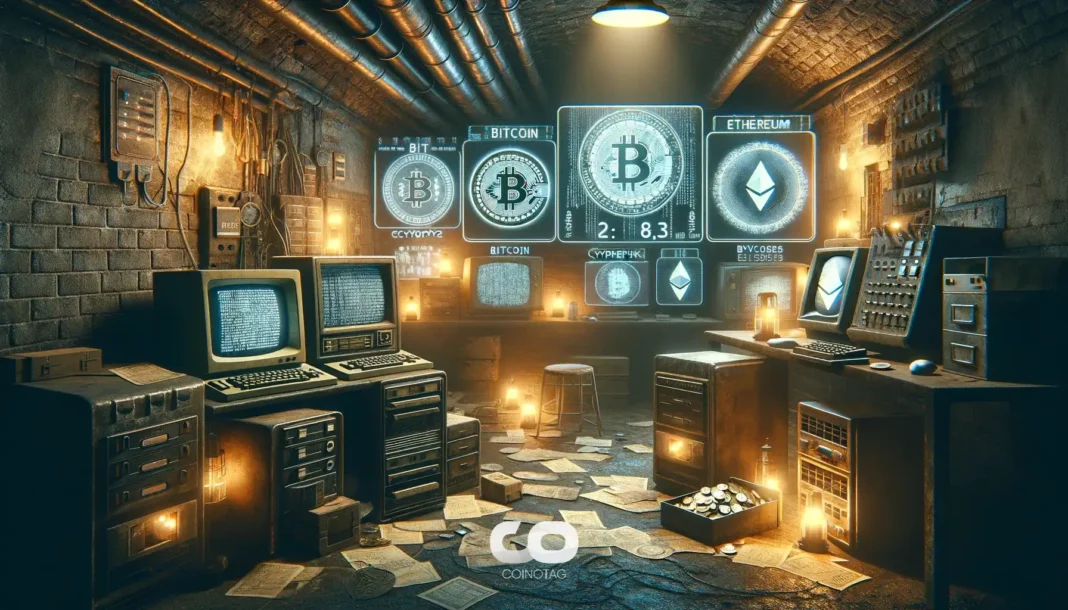| COINOTAG recommends • Exchange signup |
| 💹 Trade with pro tools |
| Fast execution, robust charts, clean risk controls. |
| 👉 Open account → |
| COINOTAG recommends • Exchange signup |
| 🚀 Smooth orders, clear control |
| Advanced order types and market depth in one view. |
| 👉 Create account → |
| COINOTAG recommends • Exchange signup |
| 📈 Clarity in volatile markets |
| Plan entries & exits, manage positions with discipline. |
| 👉 Sign up → |
| COINOTAG recommends • Exchange signup |
| ⚡ Speed, depth, reliability |
| Execute confidently when timing matters. |
| 👉 Open account → |
| COINOTAG recommends • Exchange signup |
| 🧭 A focused workflow for traders |
| Alerts, watchlists, and a repeatable process. |
| 👉 Get started → |
| COINOTAG recommends • Exchange signup |
| ✅ Data‑driven decisions |
| Focus on process—not noise. |
| 👉 Sign up → |
Lido’s proposed LDO buyback program aims to reduce circulating supply using staking revenue, capped at $10 million annually when ETH exceeds $3,000 and revenue tops $40 million. This anti-cyclical strategy follows trends seen in projects like Uniswap, enhancing token liquidity and long-term value for holders.
-
Lido, a leading Ethereum staking platform, plans to repurchase LDO tokens to support market stability and reduce on-chain liquidity.
-
The initiative is funded exclusively by staking rewards, with execution targeted for early 2026 pending community approval.
-
Despite a short-term 9% price dip post-announcement, on-chain metrics show 37 million tokens accumulated by long-term holders, signaling bullish sentiment.
Lido LDO buyback program: Discover how this Ethereum staking leader’s token repurchase plan, funded by revenue, could boost value amid crypto trends. Stay informed on DeFi developments—explore more insights today! (152 characters)
What is Lido’s LDO Buyback Program?
Lido’s LDO buyback program is a strategic initiative by the Ethereum-based liquid staking protocol to repurchase its native governance token using a portion of its staking revenue. Launched as a proposal in late 2025, it seeks to decrease the circulating supply of LDO, thereby potentially increasing its scarcity and supporting price stability over time. The program operates on an anti-cyclical basis, activating buybacks primarily during bullish market phases to optimize impact without straining resources during downturns.
| COINOTAG recommends • Professional traders group |
| 💎 Join a professional trading community |
| Work with senior traders, research‑backed setups, and risk‑first frameworks. |
| 👉 Join the group → |
| COINOTAG recommends • Professional traders group |
| 📊 Transparent performance, real process |
| Spot strategies with documented months of triple‑digit runs during strong trends; futures plans use defined R:R and sizing. |
| 👉 Get access → |
| COINOTAG recommends • Professional traders group |
| 🧭 Research → Plan → Execute |
| Daily levels, watchlists, and post‑trade reviews to build consistency. |
| 👉 Join now → |
| COINOTAG recommends • Professional traders group |
| 🛡️ Risk comes first |
| Sizing methods, invalidation rules, and R‑multiples baked into every plan. |
| 👉 Start today → |
| COINOTAG recommends • Professional traders group |
| 🧠 Learn the “why” behind each trade |
| Live breakdowns, playbooks, and framework‑first education. |
| 👉 Join the group → |
| COINOTAG recommends • Professional traders group |
| 🚀 Insider • APEX • INNER CIRCLE |
| Choose the depth you need—tools, coaching, and member rooms. |
| 👉 Explore tiers → |
How Will the LDO Buyback Impact Token Supply and Liquidity?
The buyback mechanism is designed to systematically reduce LDO’s circulating supply while preserving the protocol’s treasury health. Under the proposal, repurchases would occur only when Ethereum’s price surpasses $3,000, monthly staking revenue exceeds $40 million, and the annual cap of $10 million is not exceeded. This conditional structure ensures sustainable execution, with projections estimating a modest 2% or less impact on overall price dynamics.
By channeling staking rewards—primarily derived from ETH validation fees—into token acquisitions, Lido aims to enhance on-chain liquidity for stETH holders while diminishing excess LDO availability. Data from on-chain analytics platforms like Santiment indicate that similar strategies in other DeFi projects have led to improved holder confidence. For instance, DeFi analyst DeFi Ignas noted that at the $10 million cap, approximately $4 million in LDO could be repurchased yearly, equating to about $333,000 monthly under optimal conditions.
| COINOTAG recommends • Exchange signup |
| 📈 Clear interface, precise orders |
| Sharp entries & exits with actionable alerts. |
| 👉 Create free account → |
| COINOTAG recommends • Exchange signup |
| 🧠 Smarter tools. Better decisions. |
| Depth analytics and risk features in one view. |
| 👉 Sign up → |
| COINOTAG recommends • Exchange signup |
| 🎯 Take control of entries & exits |
| Set alerts, define stops, execute consistently. |
| 👉 Open account → |
| COINOTAG recommends • Exchange signup |
| 🛠️ From idea to execution |
| Turn setups into plans with practical order types. |
| 👉 Join now → |
| COINOTAG recommends • Exchange signup |
| 📋 Trade your plan |
| Watchlists and routing that support focus. |
| 👉 Get started → |
| COINOTAG recommends • Exchange signup |
| 📊 Precision without the noise |
| Data‑first workflows for active traders. |
| 👉 Sign up → |
Critics within the community have pointed out that this scale pales in comparison to more aggressive buyback efforts by competitors, such as those targeting over $30 million monthly. However, proponents argue that Lido’s measured approach aligns with its role as a mature staking leader, prioritizing long-term protocol resilience over short-term hype. According to protocol documentation, this move builds on a broader industry shift toward tokenomics optimization, as evidenced by recent adoptions in platforms like Uniswap and Hyperliquid.

| COINOTAG recommends • Traders club |
| ⚡ Futures with discipline |
| Defined R:R, pre‑set invalidation, execution checklists. |
| 👉 Join the club → |
| COINOTAG recommends • Traders club |
| 🎯 Spot strategies that compound |
| Momentum & accumulation frameworks managed with clear risk. |
| 👉 Get access → |
| COINOTAG recommends • Traders club |
| 🏛️ APEX tier for serious traders |
| Deep dives, analyst Q&A, and accountability sprints. |
| 👉 Explore APEX → |
| COINOTAG recommends • Traders club |
| 📈 Real‑time market structure |
| Key levels, liquidity zones, and actionable context. |
| 👉 Join now → |
| COINOTAG recommends • Traders club |
| 🔔 Smart alerts, not noise |
| Context‑rich notifications tied to plans and risk—never hype. |
| 👉 Get access → |
| COINOTAG recommends • Traders club |
| 🤝 Peer review & coaching |
| Hands‑on feedback that sharpens execution and risk control. |
| 👉 Join the club → |

Source: Tokenomist
Impact on LDO Markets
Following the proposal’s announcement, LDO experienced a 9% price decline, mirroring broader market pressures in the cryptocurrency sector. This dip brought the token’s value below $1 from recent highs around $1.50 over the past few months. However, underlying on-chain indicators paint a more optimistic picture for sustained growth.
Analytics from Santiment reveal a notable uptick in long-term holder accumulation. Specifically, the supply of LDO held outside exchanges—often a proxy for committed investors—rose by 37 million tokens, reaching 865 million in total. This trend suggests that despite immediate volatility, market participants view the buyback as a positive catalyst for LDO’s medium-term prospects.
| COINOTAG recommends • Exchange signup |
| 📈 Clear control for futures |
| Sizing, stops, and scenario planning tools. |
| 👉 Open futures account → |
| COINOTAG recommends • Exchange signup |
| 🧩 Structure your futures trades |
| Define entries & exits with advanced orders. |
| 👉 Sign up → |
| COINOTAG recommends • Exchange signup |
| 🛡️ Control volatility |
| Automate alerts and manage positions with discipline. |
| 👉 Get started → |
| COINOTAG recommends • Exchange signup |
| ⚙️ Execution you can rely on |
| Fast routing and meaningful depth insights. |
| 👉 Create account → |
| COINOTAG recommends • Exchange signup |
| 📒 Plan. Execute. Review. |
| Frameworks for consistent decision‑making. |
| 👉 Join now → |
| COINOTAG recommends • Exchange signup |
| 🧩 Choose clarity over complexity |
| Actionable, pro‑grade tools—no fluff. |
| 👉 Open account → |


| COINOTAG recommends • Members‑only research |
| 📌 Curated setups, clearly explained |
| Entry, invalidation, targets, and R:R defined before execution. |
| 👉 Get access → |
| COINOTAG recommends • Members‑only research |
| 🧠 Data‑led decision making |
| Technical + flow + context synthesized into actionable plans. |
| 👉 Join now → |
| COINOTAG recommends • Members‑only research |
| 🧱 Consistency over hype |
| Repeatable rules, realistic expectations, and a calmer mindset. |
| 👉 Get access → |
| COINOTAG recommends • Members‑only research |
| 🕒 Patience is an edge |
| Wait for confirmation and manage risk with checklists. |
| 👉 Join now → |
| COINOTAG recommends • Members‑only research |
| 💼 Professional mentorship |
| Guidance from seasoned traders and structured feedback loops. |
| 👉 Get access → |
| COINOTAG recommends • Members‑only research |
| 🧮 Track • Review • Improve |
| Documented PnL tracking and post‑mortems to accelerate learning. |
| 👉 Join now → |
Source: Santiment
Trading activity further reinforces this sentiment. On major exchanges like Binance, top traders have boosted their long positions by 2%, now comprising 66% of overall activity related to LDO. This collective behavior from both retail and institutional players highlights a shared conviction in the token’s recovery potential, even as macroeconomic factors influence short-term pricing.
| COINOTAG recommends • Exchange signup |
| 🎯 Focus on process over noise |
| Plan trades, size positions, execute consistently. |
| 👉 Sign up → |
| COINOTAG recommends • Exchange signup |
| 🛠️ Simplify execution |
| Keep decisions clear with practical controls. |
| 👉 Get started → |
| COINOTAG recommends • Exchange signup |
| 📊 Make data your edge |
| Use depth and alerts to avoid guesswork. |
| 👉 Open account → |
| COINOTAG recommends • Exchange signup |
| 🧭 Be prepared, not reactive |
| Turn setups into rules before you trade. |
| 👉 Create account → |
| COINOTAG recommends • Exchange signup |
| ✍️ Plan first, then act |
| Entries, exits, and reviews that fit your routine. |
| 👉 Join now → |
| COINOTAG recommends • Exchange signup |
| 🧩 Consistency beats intensity |
| Small, repeatable steps win the long run. |
| 👉 Sign up → |
Lido Platform Traction
Since its inception in 2020, Lido has established itself as a cornerstone of Ethereum’s staking ecosystem. The platform allows users to stake ETH effortlessly, earning rewards while maintaining liquidity through its stETH derivative, which integrates seamlessly into decentralized finance protocols. This innovation has democratized staking, enabling participation without the technical barriers of running full nodes.
At its height, Lido managed over 30% of all staked ETH, prompting discussions on centralization risks within the Ethereum network. In response, the protocol has pursued greater decentralization, diversifying node operators and fostering competition in the liquid staking space. As of late 2025, Lido holds a 23% share of the liquid staking market, generating $94 million in annualized revenue from fees and rewards distribution.
| COINOTAG recommends • Premium trading community |
| 🏛️ WAGMI CAPITAL — Premium Trading Community |
| Strategic insights, exclusive opportunities, professional support. |
| 👉 Join WAGMI CAPITAL → |
| COINOTAG recommends • Premium trading community |
| 💬 Inner Circle access |
| See members share real‑time PnL and execution notes in chat. |
| 👉 Apply for Inner Circle → |
| COINOTAG recommends • Premium trading community |
| 🧩 Turn theses into trades |
| Reusable templates for entries, risk, and review—end to end. |
| 👉 Join the club → |
| COINOTAG recommends • Premium trading community |
| 💡 Long‑term mindset |
| Patience and discipline over noise; a process that compounds. |
| 👉 Get started → |
| COINOTAG recommends • Premium trading community |
| 📚 Education + execution |
| Courses, playbooks, and live market walkthroughs—learn by doing. |
| 👉 Get access → |
| COINOTAG recommends • Premium trading community |
| 🔒 Members‑only research drops |
| Curated analyses and private briefings—quality over quantity. |
| 👉 Join WAGMI CAPITAL → |


| COINOTAG recommends • Exchange signup |
| 🧱 Execute with discipline |
| Watchlists, alerts, and flexible order control. |
| 👉 Sign up → |
| COINOTAG recommends • Exchange signup |
| 🧩 Keep your strategy simple |
| Clear rules and repeatable steps. |
| 👉 Open account → |
| COINOTAG recommends • Exchange signup |
| 🧠 Stay objective |
| Let data—not emotion—drive actions. |
| 👉 Get started → |
| COINOTAG recommends • Exchange signup |
| ⏱️ Trade when it makes sense |
| Your plan sets the timing—not the feed. |
| 👉 Join now → |
| COINOTAG recommends • Exchange signup |
| 🌿 A calm plan for busy markets |
| Set size and stops first, then execute. |
| 👉 Create account → |
| COINOTAG recommends • Exchange signup |
| 🧱 Your framework. Your rules. |
| Design entries/exits that fit your routine. |
| 👉 Sign up → |
Source: DeFiLlama
Cumulatively, since launch, Lido has amassed $284 million in revenue, underscoring its operational maturity. The buyback proposal arrives at a pivotal moment, as Ethereum’s staking landscape evolves post-upgrades like Dencun, which have lowered costs and boosted adoption. Industry experts, including those from Messari, emphasize that such treasury management tactics are essential for DAOs to align incentives between users and token holders.
The voting process for the LDO buyback is slated for the first quarter of 2026, allowing the community ample time to deliberate. This follows a pattern observed in other DeFi entities, where buybacks have not only curbed sell pressure but also reinforced governance participation. Lido’s approach, rooted in data-driven conditions, exemplifies prudent financial stewardship in the volatile crypto environment.
Frequently Asked Questions
What Triggers the Activation of Lido’s LDO Buyback?
The program activates when ETH trades above $3,000, staking revenue surpasses $40 million monthly, and the yearly $10 million limit remains unmet. This setup ensures buybacks occur during favorable conditions, promoting efficient use of funds and minimal market disruption. Community governance will oversee implementation details. (48 words)
Is the LDO Buyback Program Bullish for Long-Term Holders?
Yes, by reducing circulating supply through revenue-funded repurchases, the program signals confidence in Lido’s growth. On-chain data shows increased accumulation by non-exchange wallets, and trader sentiment on platforms like Binance leans positive with rising long positions—ideal for voice searches on DeFi token strategies. (45 words)
Key Takeaways
- Lido’s Buyback Reduces Supply Strategically: Funded by staking revenue under strict conditions, it targets up to $10 million annually to enhance LDO scarcity without overextending treasury resources.
- Market Reaction Shows Resilience: A 9% price drop occurred initially, but 37 million tokens accumulated off-exchanges indicate strong long-term holder conviction amid broader trends.
- Platform Strength Supports Initiative: With 23% market share and $94 million yearly revenue, Lido’s buyback positions it competitively—consider staking ETH via Lido for liquidity and rewards.
Conclusion
Lido’s LDO buyback program represents a calculated step in tokenomics refinement, leveraging robust staking revenue to bolster supply dynamics and investor trust in the Ethereum ecosystem. As the protocol maintains its 23% dominance in liquid staking, this initiative could set a benchmark for sustainable DeFi practices. Looking ahead, community approval in Q1 2026 may catalyze further adoption—stakeholders should monitor developments closely for opportunities in the evolving crypto landscape.
| COINOTAG recommends • Members‑only research |
| 📌 Curated setups, clearly explained |
| Entry, invalidation, targets, and R:R defined before execution. |
| 👉 Get access → |
| COINOTAG recommends • Members‑only research |
| 🧠 Data‑led decision making |
| Technical + flow + context synthesized into actionable plans. |
| 👉 Join now → |
| COINOTAG recommends • Members‑only research |
| 🧱 Consistency over hype |
| Repeatable rules, realistic expectations, and a calmer mindset. |
| 👉 Get access → |
| COINOTAG recommends • Members‑only research |
| 🕒 Patience is an edge |
| Wait for confirmation and manage risk with checklists. |
| 👉 Join now → |
| COINOTAG recommends • Members‑only research |
| 💼 Professional mentorship |
| Guidance from seasoned traders and structured feedback loops. |
| 👉 Get access → |
| COINOTAG recommends • Members‑only research |
| 🧮 Track • Review • Improve |
| Documented PnL tracking and post‑mortems to accelerate learning. |
| 👉 Join now → |












